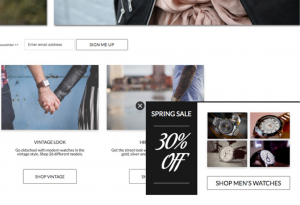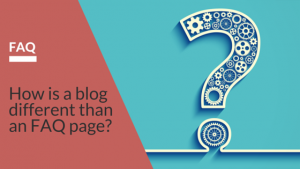In December, I walked through Twitter’s analytics platform, and today I wanted to take a similar dive into LinkedIn’s free analytics offering. If you run a company page for your business or brand, you may have noticed the little analytics button on your page.

Let’s look at what LinkedIn Analytics offers and how you can use it to both check your progress and guide your content strategy.
Here we go!
Updates
This is the first section you’ll see in your analytics dashboard. It breaks down each individual post and provides data around impressions, clicks, interactions, followers acquired, and engagement. If you scroll down past the table you see below, you’ll also see a graph mapping out reach and engagement over an adjustable period of time.

How can this help your content strategy? The data here is a great indicator for what types of content does well with your audience. If you notice posts about a particular topic are receiving a particularly high amount of likes or if asking questions drives a higher rate of engagement, consider mixing in more of these posts.
Followers
I find a ton of value in this next section. The Followers dashboard will give you a zoomed in look at who is following your page. You’ll see an initial breakdown of organic vs. acquired (via sponsored content) followers; to the right, you’ll see my favorite part: demographic data. LinkedIn provides a breakdown of your followers according to the following demographics: seniority, industry, company size, function and how many followers are employees vs. non-employees. You can toggle between each by clicking on the dropdown menu (shown below).

Other insights in this section include follower trends (you can see if there was a particular spike in follower growth at a certain time) as well as a comparison to similar competitor pages.
How can this help your content strategy? This section can be such a great tool when planning content to share on LinkedIn. Do you have a large number of entry-level employees? Think about content that discusses getting jobs in your industry or 101’s for how to use certain tools. Are they at a management level? Share content around strategy. Tailor your posts according to the industries people are in. If a large number of your followers are from companies with 11-50 employees, think about content targeted at small businesses. This information can be used so many ways. Don’t let it go to waste.
Visitors
The last section within analytics provides insight into those who are visiting your page but not necessarily following it. It gives you a look at page views, unique visitors and a full demographic breakdown just like the one you see under the Followers section.
How can this help your content strategy? We always want to be generating awareness and building our audience, and this is one way to check out who had some initial interest that drove them to your page but didn’t convince them to follow. Look at their demographics, and similar to what was discussed above, figure out if there’s ways you can be adding topics or adjusting your content they would want to follow (while also maintaining your current audience). For example, SHIFT’s visitors include a portion of people who work in the computer software space. One way we could think about getting them to stick around is to include more tech and B2B-focused posts.
As you can see, there is nothing in-depth or tricky about LinkedIn’s Analytics. It’s a simple, free tool that can provide some baseline guidance as to where you can be improving your page and catering to both current and potential audiences.
Check it out!
(344)
Report Post





